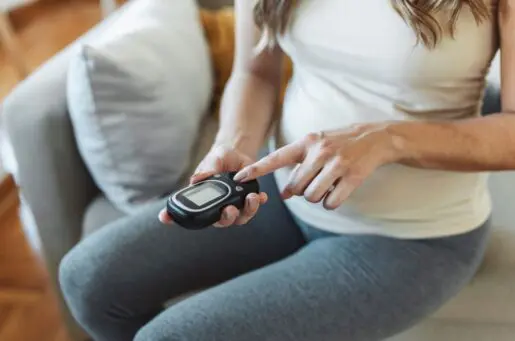Bioethics Forum Essay
Why EpiPen Prices Are No Shock
High drug prices are a fact of modern American life. They are not, however, equally high for all Americans. Their magnitude depends on whether you are un-, under-, or adequately insured, and also whether or not you are an insurance company. Insurance companies routinely negotiate for lower-than-list prices on drugs, and rebate programs and low vs. high deductibles dramatically modulate out-of-pocket costs for patients.
In recent weeks, public conversation has erupted over the price of the epinephrine autoinjector EpiPen, marketed by Pennsylvania-based pharmaceutical company Mylan and intended to treat anaphylactic allergic reactions. Since 2005, the price for an EpiPen has risen more than 600 percent (a two-pack sold for 2016 inflation-adjusted $106.32 on November 1, 2004, and $608.61 on May 16, 2016). Reactions have all the elements of a scandal: an unapologetic CEO, a lobbying campaign that worked against the public interest, and a monopoly on the market. Undisputed, however, is epinephrine’s necessity across all demographic groups, regardless of insurance status or age. For those with anaphylactic reactions to allergens, an epinephrine injector can mean the difference between life and death.
Amid the controversy, Mylan announced that it would introduce a generic version of the EpiPen for $300 for a package for two. The company will also offer up to a $300 credit for those paying for the branded version, so that no consumers will have to pay more than $300 out of pocket. While some uninsured patients may see a reduction in their out-of-pocket expenses (and Mylan may actually profit from the reduction), more remarkable is the fact that Mylan’s will be the only generic version, and the only competitor to the EpiPen, available to consumers until at least 2017. In a statement, Robert Weissman, president of the consumer group Public Citizen, remarked that “the weirdness of a generic drug company offering a generic version of its own branded but off-patent product is a signal that something is wrong.”
“Something” is clearly wrong, but pinpointing what, exactly, that is, is a difficult task. Despite the “weirdness,” pharmaceutical companies routinely produce generics of their own products (there are currently 980 of them on the market). Generics manufactured by the same company as the brand name drug are referred to as authorized generics, and are identical to their brand name counterparts in every way (including the active and inactive ingredients and delivery method) other than the name and label. Authorized generics require no FDA approval Other manufactures encounter a more difficult process: their generic drugs require approval. As of July 1, 2016, the FDA has a backlog of 4,036 generic drug applications awaiting approval, creating a standard wait time of 47 months for non-authorized generics.
The timing of Mylan’s introduction of its authorized generic version of the EpiPen stands out: right now, the EpiPen doesn’t face significant competition. While it is widely held that the introduction of the authorized generic is an attempt to mitigate controversy (and we have no doubt that this is true), the generic introduction is also of a piece with a number of Mylan’s earlier actions – appearing to serve a vital need, while financially benefiting some consumers and increasing profits.
EpiPens are, when used correctly, extremely effective and lifesaving devices – and having them in schools, where the threat of accidental exposure looms large – seems like a good idea. Lobbying efforts led to the signing of the School Access to Emergency Epinephrine Act in 2013, which gave financial incentives to states that mandate epinephrine autoinjectors in schools. Federal guidelines call for selling autoinjectors in two-packs, in case the first dose is insufficient. In combination with the EpiPen’s market monopoly and overwhelming brand name recognition, these laws and guidelines almost exclusively benefit Mylan. When Teva Pharmaceuticals won the rights to sell a generic version of the EpiPen, Mylan responded by filing a citizen petition with the FDA. The petition raised doubts as to whether Teva’s product would be similar (and safe) enough to qualify as a generic version. FDA denied Mylan’s petition, but later rejected the Teva product anyway, a decision rooted in patient safety, but nonetheless to Mylan’s benefit and likely influenced by the company’s petition.
Mylan’s practices fit into a system of financial and patient safety considerations that is working as it was designed to (which is an entirely different beast from a system working as most Americans wish it would). Mylan’s responsibilities are to its shareholders and to satisfying the safe drug needs of the public. While an ideal system would be predicated a moral imperative to maximize access even if it meant lower profits, there is currently no overriding reason (aside from bad P.R.) for companies like Mylan to do so. The U.S. health care system and populace depends on for-profit companies developing and producing drugs by taking financial risks and in return, maximizing profits. Ultimately, Mylan seeks to create the largest possible market share for its product, and since it is a product with enormous benefits to the public, policies are in place to increase its proliferation, as well as consumer access. Because of inequality in our health care system, only a small proportion of people – those without insurance who can’t or don’t find a workaround to get free or reduced price EpiPens, and those with high deductibles on their insurance – actually pay anything resembling the EpiPen list price of $600 (or the now discounted price of $300). It took a small but committed group of parents rallying around the pricing issue to make it national news.
The EpiPen highlights – but did not create – a contradiction in the U.S. system for balancing pharmaceutical innovation, affordability, and safety. On one hand, the system asserts that the development of new pharmaceuticals is an expensive risk, and responds by creating incentives, such as exclusivity and then the ability to introduce authorized generics as ways to promote innovation and streamline the drug development process. But it allows companies like Mylan to purchase the rights to existing drugs (thereby skipping over the initial development cost outlay) while maintaining exclusivity. On the other hand, the system relies on competition from several different types of drugs – generics, as well as -biosimilar products – to safely and effectively treat the same conditions and to control costs. The implicit assertion is that exclusivity and competition will balance one another out, resulting in more but also cheaper drugs. The EpiPen demonstrates that they don’t.
Rachel Zacharias and Elizabeth Dietz are project managers and research assistants at The Hastings Center.












